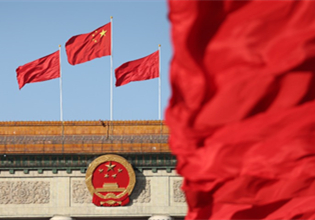Wood group looks to Russia
The Manzhouli Lianzhong Group, China's largest timber and frame-housebuilding company, is leading a project with Russia to develop forest resources.
The project, worth more than 1.5 billion yuan ($218 million), will seek to construct comprehensive bases in both countries for wood processing, storage and trade, according to Lu Baodong, vice-mayor of Manzhouli city in northern China's Inner Mongolia autonomous region.
Next to Russia, which is rich in forest resources, Manzhouli has been China's biggest land port for wood imports for 16 consecutive years.
In the first half of last year, China imported 46.08 million square meters of wood, 33 percent of which was from Russia-the largest source country for China's wood, statistics provided by Zhonglian Group show.
Manzhouli is also a key junction on the China-Mongolia-Russia economic corridor of China's Belt and Road Initiative.
The initiative has opened up new business opportunities for countries and regions along the Belt and Road trading routes since it was unveiled by President Xi Jinping in 2013.
Last year, Inner Mongolian companies invested in 88 projects in countries along the trading routes, accounting for 77.19 percent of the region's total investment projects in foreign countries, according to the regional government.
The projects are in many fields such as forestry, construction, transportation and manufacturing, under cooperation with 11 countries along the trading routes.
Located near Mongolia and Russia, Inner Mongolia mainly cooperates with the two countries.
Cooperation between them accounts for about 76.3 percent of the region's total import and export value, according to Manzhouli customs.
By 2020, the actual outward investment from Inner Mongolia will top $5 billion and more than 900 companies will invest in or cooperate with foreign countries, according to the regional government.
The investment will mainly be used in transportation for connecting the region with Mongolia and Russia, exploitation of energy resources, transfer of industries and cooperation in R&D.



 Print
Print Mail
Mail





